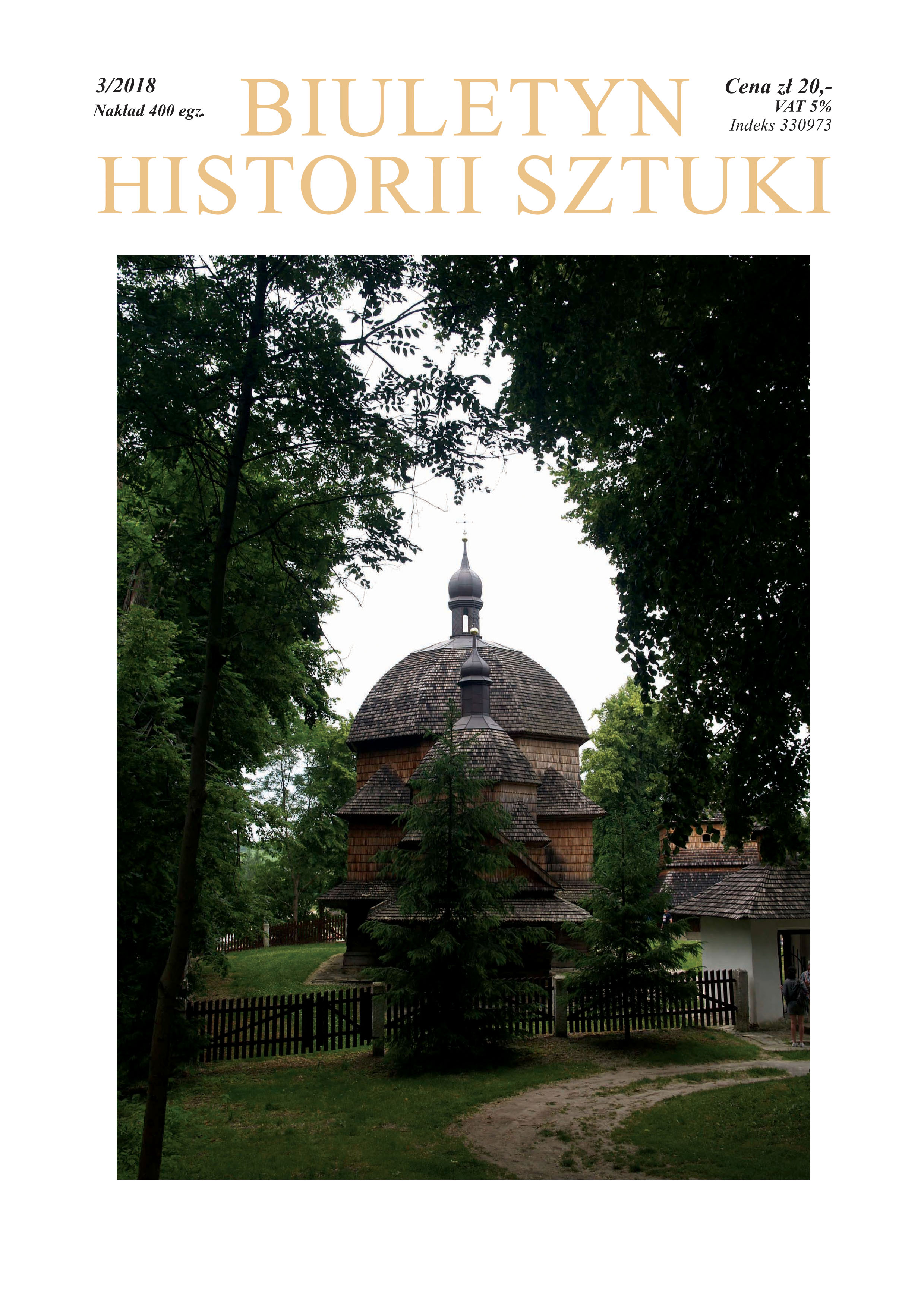Ikonografia malarstwa ściennego doby porozbiorowej w kościołach drewnianych Wielkopolski
Iconography of Wall Painting in Greater Poland Wooden Churches in the Post-Partition Period
Author(s): Aleksander JankowskiSubject(s): Fine Arts / Performing Arts, Architecture, Visual Arts, History of Art
Published by: Instytut Sztuki Polskiej Akademii Nauk
Keywords: Greater Poland Wooden Churches 19th century; Iconography of Wall Painting 19th century;
Summary/Abstract: Iconography of Wall Painting in Greater Poland Wooden Churches in the Post-Partition Period The cultural landscape of Greater Poland is co-created by numerous examples of sacral wooden architecture. There are 290 historic wooden churches, some dozens of which still date back to the 15th – 17th century. In 99 of them historic wall decoration has been preserved; fifty-three of them are complexes from the partition periods. The basis for the iconography analysis is to be found in 27 sets of paintings containing figural motifs (as well as emblematic and symbolic ones) preserved almost exclusively in rural Catholic churches. The remaining, merely ornamental furnishing of sacral interiors is most frequently made up of pattern-based compositions of decorative character, devoid of any ideological message. Two oldest decorations with figural motifs date back to the early 19th century. In 19 churches paintings from 1890-1915 have been preserved. Chronologically varied programmes of wall paintings of the post-partition period differ from the older ones (16th – 18th c.) by a clearly smaller number of figural motifs. Earlier typically elaborate narrative cycles had disappeared. The iconographic expression of painterly decoration generally boils down to one or several single autonomized representations. In those reduced figural programmes a slow process of breaking with the traditional image conventions, present until the end of the 3rd quarter of the 19th century is revealed. Local artists, still trained in the guild system, when choosing iconographic motifs referred to the repertory of models that was well known to them. In many a case the permanence of the traditional iconographic schemes directly resulted from the faithfulness to the regulations of the Canonical Law describing presentations, particularly those of dogmatic character, in a detailed way. In the last quarter of the 19th century in the iconographic programmes of painterly wall decorations of the Greater Poland Province clearer symptoms of the impact of the programme of the religious life renewal proclaimed by the Holy See could be observed, in the sphere of art emphasizing faithfulness to tradition, as well as compliance with the dogmas and the canonical regulations. The relations between the theory of church art and the artistic praxis visible in the wooden churches’ wall decoration coincided with a peculiar ‘renaissance’ of figurative murals in brick churches of Greater Poland. The changes were occurring with the participation of the already new generation of painters, graduates from artistic schools, or at least drawing classes, familiar with the history of art, and well acquainted with a new history domain, mainly iconography. The artists, including those active in wooden churches, would derive from the rich repertory of reproductions of paintings by Raphael, Murillo, or Titian. Another popular oeuvre for the purpose was that of Friedrich Overbeck. The iconographic programmes of wooden churches, modest in the application of figural motifs, reflected predominantly Marian devotion, re-promoted with the 1854 proclamation of the Immaculate Conception dogma. The devotion was demonstrated mainly in the traditional presentations of the Virgin and Child, Immaculate Conception, Assumption, and Our Lady of the Rosary. Marian motifs, dominating in the painterly wall decorations actually marginalized Christological iconography. In the preserved resources not even a single Passion presentation has survived. Next to Marian motifs, a permanent element of iconographic programmes could be found in single effigies of saints. These most frequently included the Evangelists embodying the revealed foundations of the faith, but also testifying to the compliance of the iconographic contents that accompanied them with the Church’s teaching. It was only in the late 19th century that gradually more images of Polish saints appeared in the iconographic programmes of wall painting. This was the period that coincided with more intensified activity of Polish Church promoting the cult of native saints. Effigies of Polish saints were to make the faithful realize the Christian roots of the national identity. The patriotic message was to promptly manifest itself in the iconographic programmes in brick churches of Greater Poland in the form of assemblies of Polish saints serving as ‘advocates of the nation in bondage’, or in the paintings of the intervention of Our Lady at Poland’s breakthrough historic moments. The surviving wall paintings in wooden churches lack this ‘patriotic’ literality. There, more commonly only single effigies of Polish saints were presented.Despite the proclaimed slogans of the revival of religious art, the limitation of figural motifs for the sake of pattern-based ornamental compositions of decorative character, typical of wall decorations in the post-partition period, eventually resulted in increasing shallowness of the ideological iconographic programmes. The issue was raised by Church authorities. These, however, had only a limited influence on the church interior painterly décor, as this remained conditioned by the financial capacities of the congregation; in the post-partition period it was almost exclusively them who were burdened with the church running costs. The sources show that rural parishes, generally with more modest financing for church renovation, limited their expenses on the painterly décor, showing preference for cheaper pattern-based decoration, and not the more expensive figurative presentations.
Journal: Biuletyn Historii Sztuki
- Issue Year: 80/2018
- Issue No: 3
- Page Range: 699-720
- Page Count: 22
- Language: Polish
- Content File-PDF

